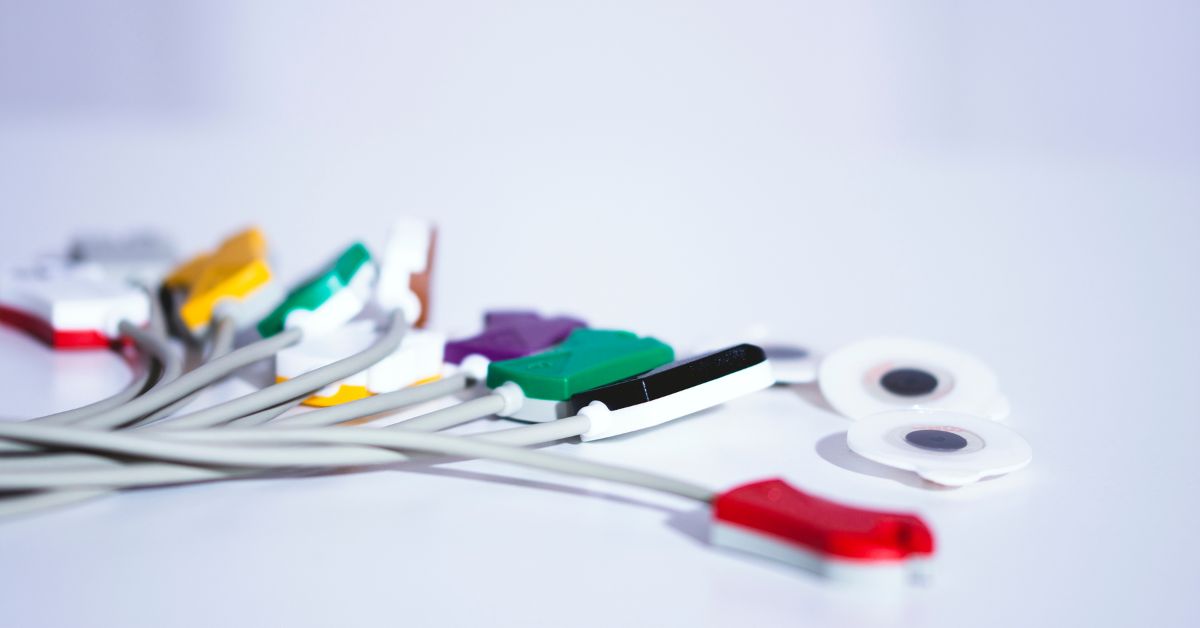One of the main tools for investigating palpitations is the 24-hour Holter monitor. This is the most useful non-invasive method for documenting and quantifying the frequency and complexity of arrhythmias and relating them to the patient's symptoms¹.
Past studies have shown that the main reasons for taking the test are, in order of frequency, palpitations, dizziness and syncope². However, the positive correlation of the test ranges from 23 to 41%²-³. Holter monitoring began in the USA in 1949 through the research of Norman J Holter and Bill Glasscock, but only became commercially available in 1962. Since then, like most medical technology, it has undergone considerable changes with important improvements such as a reduction in size, greater portability and battery capacity.
Model 445 Mini-Holter Monitor, booklet image, 1976 / Current Holter model, Contec
An important diagnostic tool of the examination that hasn't changed much over time is the patient's diary of events. Most of the time, at the beginning of the examination, the patient is given a sheet of paper and told to write down the date and time if they have any symptoms and a brief description of their complaint.
The use of the event diary helps to establish whether or not the patient's complaint is related to electrocardiographic findings, assisting in therapeutic planning - if there are alterations or, if the complaint is not accompanied by alterations in the test, the investigation of possible causes unrelated to the rhythm. The ability to relate the complaint that prompted the test to electrocardiographic alterations or not makes the event diary elucidating and an important diagnostic tool.
However, the need to fill it out manually and often the inability to pinpoint the exact time and minute of the symptom mean that the event diary is underused. In a study carried out at the Dante Pazzanese Institute of Cardiology in 2019 and presented at the World Congress on Arrhythmias, 6585 examinations carried out in 2018 were evaluated. Of these, only 6.81% described a complaint in the diary, with a positive correlation of 24.8%. Despite the low description of symptoms, 68.6% of asymptomatic patients had significant arrhythmias. Given this result, two scenarios are possible: truly asymptomatic patients or those who had symptoms but didn't report them.
One possible way to optimize the diagnostic power of the Holter is to modernize the way the information is filled in, with the possibility of pinpointing the exact time of the symptom and the ease of digital annotation. Through the use of apps on more modern devices and with a 'symptom button' on the device, the patient can record these events more easily or, in online monitoring methods with the help of artificial intelligence, they can be actively questioned about their activities and symptoms at the time of the changes.
These developments may be the answer to the many uninformative event logs and determine whether the patient is part of scenario one: truly asymptomatic or scenario two: the relationship between the symptom and the electrocardiographic alteration was not possible simply because the event log was not filled in.
1. Miller JM, Zipes DP. Diagnosis of cardiac arrhythmia. In: Braunwald E, Zipes DP, Libby P, Bonow R, editors. Branwald's heart disease: a textbook of cardiovascular medicine. 7th ed. Philadelphia: Elsevier Sunders; 2004. p. 697- 712
2. Irfan, Ghazala, Mansoor Ahmad, and Abdul Rasheed Khan. "Association between symptoms and frequency of arrhythmias on 24-hour Holter monitoring." J Coll Physicians Surg Pak 19.11 (2009): 686-689
3. Clark, Pamela I., Stephen P. Glasser, and Edward Spoto Jr. "Arrhythmias detected by ambulatory monitoring: lack of correlation with symptoms of dizziness and syncope." Chest 77.6 (1980): 722-725.
4. Berbert, GH et al. Correlation between symptoms and electrocardiographic alterations in 24h Holter. 16th World Congress of Arrhythmias, Buenos Aires, 2019.



